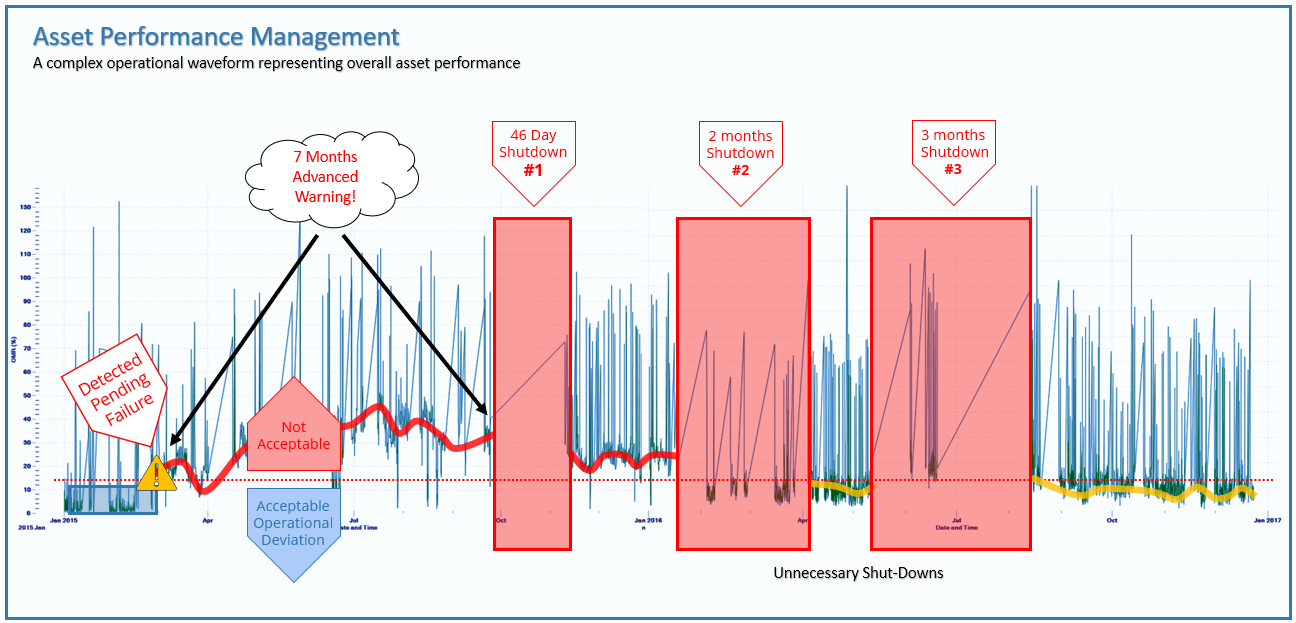Asset performance management is a mature discipline for the explicit purpose of improving the reliability and availability of physical assets
What is Asset Performance Management (APM)?
Asset Performance Management software is used to automate data capture, integration, visualisation, and the analytics required to understand asset performance and also share the knowledge and insights with a wider and perhaps less technical audience.
When APM information is presented simply and in context, what would otherwise be a mountain of “1’s and “0”s and nasty tables of mostly useless information, becomes insightful to the point that anyone can quickly be informed that everything is under control, something is slightly off track or its time to act.

Is APM Software reliable?
Anyone thinking of using a software application to improve the performance of an asset would assume that the software is reliable. Tongue in cheek, why would you use a questionable software platform to manage the reliability of an asset which is critical to operational performance. Thankfully, you can use Operationalised software rather than using custom code & machine learning tools that is at risk of change as source code updates roll out to operating environments or the developer responsible for the solutions becomes unavailable. It may be cool to use a free downloadable software stack that will prove a point, however with embarrassingly high failure rates for Artificial Intelligence projects, is it any wonder industrial solutions call for industrial software applications that have been time tested.
Industrial software solutions are maturing, improving, and being enhanced with improved data collection, slicker analytics, better business system interfacing and so forth, not needing to invest in fundamental performance. It is an obvious choice to use what to do for critical and complex assets, go safe.
What does APM Software do?
APM Software takes the heavy lifting out of interpreting streams of data coming from asset instruments or controlling devices. Depending on the application software selected, it may process the data using Artificial Intelligence, machine learning, pattern recognition, algorithms most appropriate to the asset and a number of other methods. Here is an example of what APM Software can do.

Asset Performance Management Objectives
Asset performance management systems act to improve the reliability and availability of physical assets while minimising risk and operating costs. Some may summarise this as a scientific approach to “cost avoidance”. They would be right; however, you don’t have to be a data scientist or programmer to gain this value.
What are the components of an APM system?
APM typically includes condition monitoring, predictive maintenance, asset integrity management, reliability-centred maintenance, and often involves technologies such as asset health data collection, visualization, and analytics.
How does APM help with Cost Avoidance?
Cost avoidance is about preventing a failure and getting there before it’s a mess. It’s about delaying expensive unplanned maintenance. Cost avoidance is made possible because asset operators and asset owners have empirical evidence and a developed confidence that the operational performance signatures of their assets have not changed since new or since the last rebuild. These same solutions prevent BAU assumptions being made after a maintenance event when all the alarms are gone, and everyone goes home. But the assets are not back to normal! All of this happens undetectable to the naked eye using traditional automation controls and statistical process control tools, until it fails. Traditional tools have their place too, but not for predicting the future.

How does Parasyn implement APM Solutions?
Our Digital Systems engineering team design, implement & support asset performance and advanced data applications based on a well-engineered data management platform. We can provide advice on how to get started and if your situation is ripe for reward.
Our purpose is to transform how our customers manage their critical assets using a systems approach to solutions and choosing the right technology to deliver step change for your organisation.
YOU MIGHT ALSO BE INTERESTED IN:

